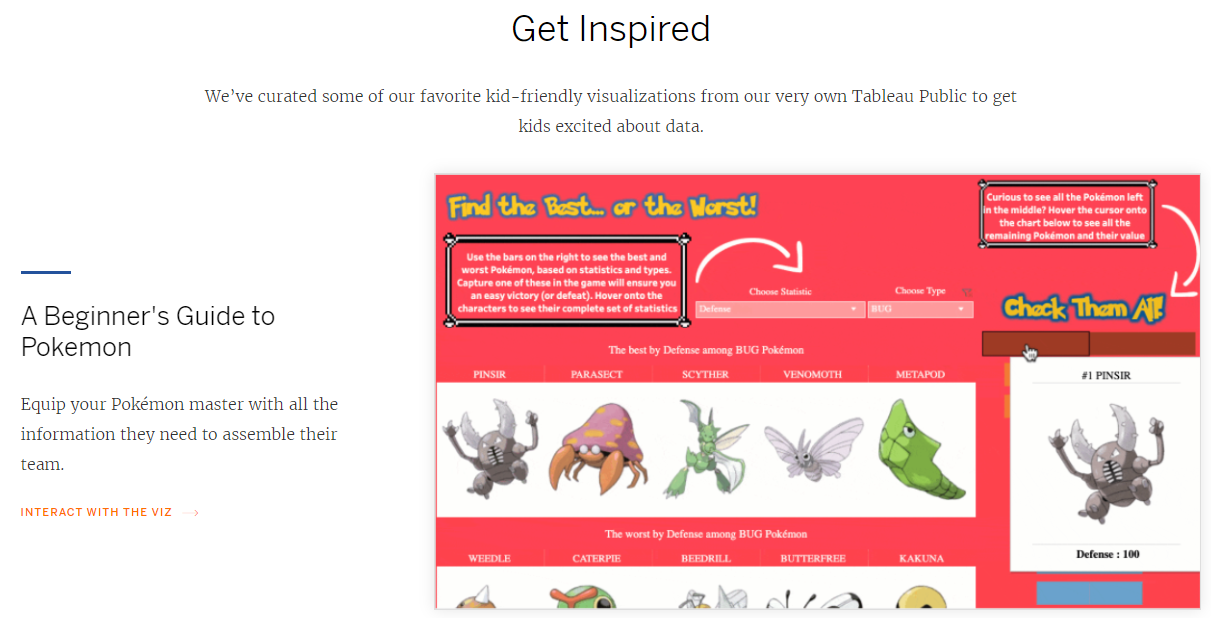How Academia Can Bridge the Data Skills Gap

Big data is no longer just a buzzword. While the corporate and financial sectors have long relied on sophisticated analytics to better understand and forecast trends, other types of concerns—from health care to education to nonprofits to government—are becoming more data driven, resulting in the need for increased data literacy skills across the employee base.
“There’s a high expectation that you should know how to analyze and use data,” says Elissa Fink, the former Chief Marketing Officer of Tableau, the interactive data visualization software company. “Companies are looking for people to demonstrate this skill in their background, their resumes, their profiles, or in how they talk about success.” Analyzing data so it can be harnessed across institutions is no longer considered the responsibility of data scientists. Rather, employees from a multitude of departments are expected to rely on data to make smarter decisions for the enterprise, she says.
Yet, while employers are increasingly demanding that the modern workforce demonstrate data literacy, many find those skills lacking in the talent pool, especially among entry-level hires. In fact, a June 2021 Forrester Consulting thought leadership paper commissioned by Tableau, “ The Great Data Literacy Gap: Demand For Data Skills Exceeds Supply,” found that even as demand for data skills grows, “academia is behind in the level at which it prepares its students.”
A recognized gap
To develop “The Great Data Literacy Gap,” Forrester surveyed 219 hiring managers and recruiters as well as 156 respondents from academia responsible for data literacy and analytics curriculums, programs and initiatives. It found a disconnect between workforce needs and the training universities are providing. Among the findings:
- Recruiters ranked data skills as the most in-demand skill today, especially among entry-level hires. The need for data skills has increased in demand in the past two years, and its importance will continue to grow.
- While many universities have basic math requirements, only 48% of respondents say their institutions have specific data skills initiatives in place. Just 39% say they have a strong understanding of what recruiters are looking for today.
- Investments in data skills pay dividends. Academic institutions with data skills initiatives see job placement rates that are 11.5% higher than universities without them.
Fink, who now advises companies and teaches at the University of Washington, says employers aren’t expecting all new hires to be professionally-trained analysts. “But they should be asking everyone to have basic literacy in evaluating numbers and patterns,” she says. It’s comparable to writing. “Not everyone is a great writer, but if you’re in business, you should know how to write a decent email,” she says.
Bridging the data divide
To bridge this gap, universities can take advantage of offerings from data analytics platforms like Tableau, which has provided free licenses to help more than 1.8 million students learn data skills, enabled by 45K+ instructors across disciplines and fields of study around the globe. Its free data literacy curriculum includes ready-made courses and teaching resources for educators and eLearning for students of all skill levels for remote, self-paced learning. Tableau recently pledged to enable 10 million people with data skills in five years, including a $5M initiative to drive gender equity and teach data skills to women and girls.
Esther Okaro, who is studying for her Master’s in Computational Health Informatics at the University of Houston, started using Tableau in her health visualization class. When trying to make sense of a trove of data, Okaro watched sample demonstrations online to learn how to use the software. She now uses it whenever she has to present data analysis.
"[Tableau] helps me make visually-sound presentations, so whoever comes across the data can easily understand it."
As the COVID-19 pandemic raged across the world, she used Tableau to analyze death rates among different age groups in different parts of the US. “It helped us see where the patients were, who was most affected and which facilities would be needed to treat them,” she said.
Experiences like Okaro’s are instructive as academic departments consider how they can augment existing degree programs with data analytics skills. While it is possible to earn a Bachelor’s or Master’s degree in data analytics at a number of universities, Fink suggests that data skills be taught in other disciplines, too, such as marketing, business, and sociology.
In the 3-and-a-half years since she started teaching at the University of Washington, Fink is hearing students mention data more frequently. “I’m seeing more and more classes adding aspects of analytics to their programs,” she says, “not only as a specialty or a separate class.” Fink is encouraged by the increase, noting, “Data is all around us and can be used in practically every decision we make.”
Teaching data literacy at an earlier age
To address the skills gap in a truly meaningful way, data literacy should actually begin in prekindergarten, argues Joy Boler, the Nomellini & Olivier Professor of Education at Stanford University and the founder of youcubed, an online platform for teachers and parents. “All students, even those starting in prekindergarten, need to learn mathematics in a way that develops data literacy in order to help prepare them for this data-filled world,” she says.
Tableau, Academic Programs understands the need for data skills at earlier ages. Tableau Data Kids helps educators discover creative new approaches to teaching young learners about data. Tableau Data Kids provides engaging, real-world activities and fun visualizations to inspire early learning and get kids excited about exploring the data that's around them every day.
Tableau Data Kids helps educators discover new approaches to teaching young learners about data.
Tableau Data Kids helps educators discover new approaches to teaching young learners about data.
One of the barriers to preparing students stems from gaps in the existing curriculum and in teacher training. “Teachers themselves have not had this as a part of their education,” Boler says. In California, she’s working to place greater emphasis on data literacy through the state’s new Math Framework. She’s also offering an online class, 21st Century Teaching and Learning: Data Science. “This class is showing teachers how these data tasks can bring in a lot of the content they have to teach already. It’s not new, it’s not extra added content. They can take a data perspective with the work they’re already doing,” she says.
Boler also hopes to address the value college admissions officers place on traditional math courses instead of data science. That could be changing. California’s state college system recently told high schools that students could take a year of data science instead of Algebra 2. “I've also worked for quite a while to get Stanford to change, and they have now updated their admissions statement to include data science as a valuable pathway,” she says.
However, challenges remain. “Most of the [high school] teachers we speak to say, ‘We can’t teach data science if the colleges we speak to don’t value it,’” Boler notes. Even in California, where the state system has indicated the value it places on data science, college counselors are still preaching the value of calculus, and parents tend to follow suit, she says. “Parents don't know and they think calculus is everything.”
Another issue: prerequisites for fields of study. College faculty may require calculus even if it does not fit the major, “just because that’s what’s been done for years,” Boler adds. “For example, in psychology, calculus may be a requirement but statistics is really what’s going to be beneficial.”
These types of challenges point to a systemic issue, one that will need to be addressed at multiple levels. “Teachers need to know and understand data science and be willing to teach it in K-12,” Boler says. “There will be an ongoing need for a long time to get teachers trained and onboard. We need to think about it as a whole system change.”
This content is sponsored and provided by Tableau. The editorial team at Inside Higher Ed had no role in its production.



